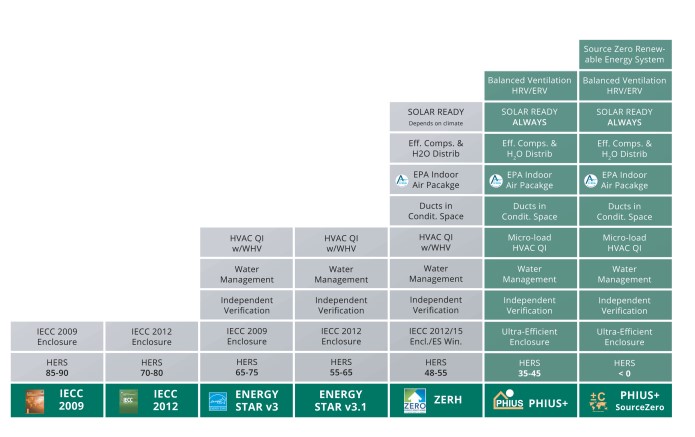
From Green Building to Climate Action: The Importance of Emissions Reduction in Construction
The construction industry sector is a key contributor to greenhouse gas emissions, accounting for nearly 38% of global CO2 emissions. As the world becomes increasingly aware of the impacts of climate change, the need for emissions reduction in construction has become more pressing. From green building practices to climate action plans, various strategies can help reduce emissions in the construction industry. As a professional in this field, it is important to understand the role that construction plays in climate change and the steps that can be taken to mitigate its impact.
What are the emissions associated with construction activities?
Construction activities are known to be a significant source of pollution and greenhouse gas emissions. The emissions associated with construction activities can be classified into two categories: direct and indirect emissions.
Direct emissions are the result of onsite activities, such as the use of heavy machinery, construction vehicles, and generators. These activities emit carbon dioxide (CO2), nitrogen oxides (NOx), sulfur oxides (SOx), and particulate matter (PM). The amount of direct emissions depends on the duration and intensity of the construction activity, the type of machinery used, and the fuel sources employed.
Indirect emissions, carbon or otherwise, are caused by the production and transportation of materials used in buildings, and construction, including concrete, steel, and other building materials. These emissions are associated with the energy consumption required to extract raw materials, manufacture and transport them, and dispose of waste. The primary contributors to indirect emissions are the fuel sources used in the transportation of materials and the energy sources used in their production.
In the construction industry, it is estimated that carbon dioxide emissions account for approximately 38% of global greenhouse gas emissions. Therefore, it is imperative to adopt sustainable practices that reduce the environmental impact of construction activities.
To minimize emissions associated with construction activities, some best practices include using low-emission machinery, reducing the use of fossil fuels, using sustainable materials, and implementing energy-efficient design practices. Additionally, using green building certifications such as Leadership in Energy and Environmental Design (LEED) certification can help to reduce the environmental impact of construction activities.
How is the construction industry adapting to the effects of climate change?
The construction industry has a significant role to play in addressing the challenges posed by climate change. It is no secret that the industry is a major contributor to greenhouse gas emissions, which have a significant impact on the environment. As such, there has been an increasing focus on sustainability within the industry, with many businesses taking steps to reduce their carbon footprint and mitigate the effects of climate change.
One of the ways that the construction industry is adapting to the effects of climate change is through the use of green building practices. This includes the use of sustainable materials, such as recycled materials and wood from sustainably managed forests. Additionally, many construction companies are incorporating green technologies into their projects, such as solar panels and wind turbines, to reduce their reliance on traditional energy sources.
Another key area of focus for the construction industry is water conservation. Many construction companies are implementing water-saving strategies, such as the use of low-flow fixtures and rainwater harvesting systems, to reduce water consumption and waste.
In addition to these measures, the construction industry is also working to reduce its waste generation. This includes the use of prefabricated building components and the recycling of construction waste materials. By reducing waste, the industry can help to conserve natural resources and reduce the environmental impact of construction activities.
Overall, the construction industry is taking significant steps to adapt to the effects of climate change. By embracing sustainability and green building practices, companies can reduce their carbon footprint and help to mitigate the effects of climate change. With continued innovation and investment, the industry can lead the way in transitioning to a more sustainable and low-carbon future. As consumers and governments climate action, it is imperative that the construction industry continues to prioritize emissions reduction and sustainability in all aspects of its operations.
What sustainable construction materials are available to reduce emissions?
As the world continues to grapple with the threat of climate change, construction companies, and architects are looking for ways to reduce their carbon footprint. Sustainable construction materials are a key component in achieving this goal, as they help to reduce emissions during production, transportation, and building operations. Here are some of the most popular sustainable construction materials that are available today:
1. Recycled steel: Steel is a commonly used material in construction, but the production process is energy-intensive and contributes significantly to greenhouse gas emissions. Recycled steel, on the other hand, uses significantly less energy and reduces CO2 emissions by up to 58%.
2. Sustainably forested timber: Wood is a renewable resource and can be sustainably harvested to minimize its impact on the environment. Sustainably forested timber is certified by organizations such as the Forest Stewardship Council (FSC), which ensures that the wood is harvested from responsibly managed forests. Using sustainably forested timber helps to reduce emissions by storing carbon and reducing the need for energy-intensive materials such as concrete and steel.
3. Hempcrete: Hempcrete is a mixture of hemp fibers and lime that can be used as a building material. It has excellent insulation properties, is fire-resistant, and has a low carbon footprint. It is also a renewable material that can be grown without the use of pesticides.
4. Cross-laminated timber: Cross-laminated timber (CLT) is a sustainable alternative to traditional concrete and steel construction. It is made from layers of wood that are glued together, creating a strong and durable material. CLT has a lower carbon footprint than concrete and steel and can also be used as a carbon sink,as the wood used in its production absorbs and stores carbon dioxide.
5: Cellulose Insulation: Cellulose insulation is made from recycled paper and is a sustainable alternative to traditional insulation materials such as fiberglass. It has a lower carbon footprint than fiberglass and is also more efficient at insulating buildings, which reduces the need for heating and cooling and further reduces emissions. Additionally, cellulose insulation is fire-resistant and does not contain harmful chemicals.
These sustainable construction materials that builders are using are just a few examples of the many options that are available to help reduce emissions in the construction industry. However, it is important to note that the most sustainable building is one that is not built at all. Therefore, reducing the demand for new construction through adaptive reuse, renovation, and retrofitting of existing buildings is also an important strategy to consider in the fight against climate change. Ultimately, by prioritizing sustainability and emissions reduction in construction, the industry can make significant strides toward a more sustainable and low-carbon future.
How can construction activities help reduce greenhouse gas emissions?
As the world is becoming increasingly aware of the dangers of climate change and the need for action to reduce greenhouse gas emissions, the construction industry can play a significant role in this effort. Here are some ways in which construction activities can help reduce greenhouse gas emissions:
1. Energy-efficient building design: Building design plays a crucial role in reducing greenhouse gas emissions. Energy-efficient buildings are designed to use less energy for heating, cooling, and lighting, which reduces the carbon footprint of buildings.
2. Use of sustainable materials: The use of sustainable materials in construction can help reduce greenhouse gas emissions. Materials like bamboo, straw, and recycled materials have a lower environmental impact than traditional building materials like concrete and steel.
3. Renewable energy sources: Incorporating renewable energy sources like solar and wind power into building design can help reduce greenhouse gas emissions by reducing the reliance on fossil fuels.
4. Efficient construction practices: Adopting efficient construction practices like prefabrication, modular construction, and lean construction can help reduce the carbon footprint of construction activities by reducing waste and transportation costs.
In conclusion, the construction industry has a significant role to play in reducing greenhouse gas emissions. By adopting sustainable building practices, using renewable energy sources, and implementing efficient construction practices, the industry can help mitigate the effects of climate change and create a more sustainable future. It is imperative that construction professionals prioritize the reduction of greenhouse gas emissions in all phases of construction, from planning and design to materials selection and construction methods. Starting with an analysis of the status built environment and the embodied carbon therein. By working together towards a common goal, the construction industry can make a significant contribution to the global effort to combat climate change. Let us strive towards building a greener, decarbonize, economic, more sustainable future for generations to come.
We at Item 5 LLC are a Phius Certified Builder and perform Building Emissions Accounting for Materials (BEAM) analysis on all our jobs.






